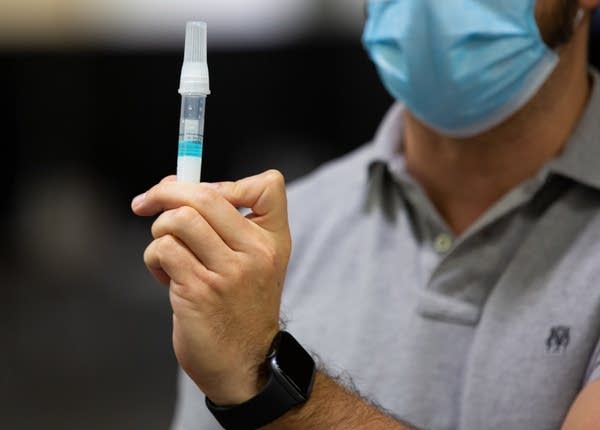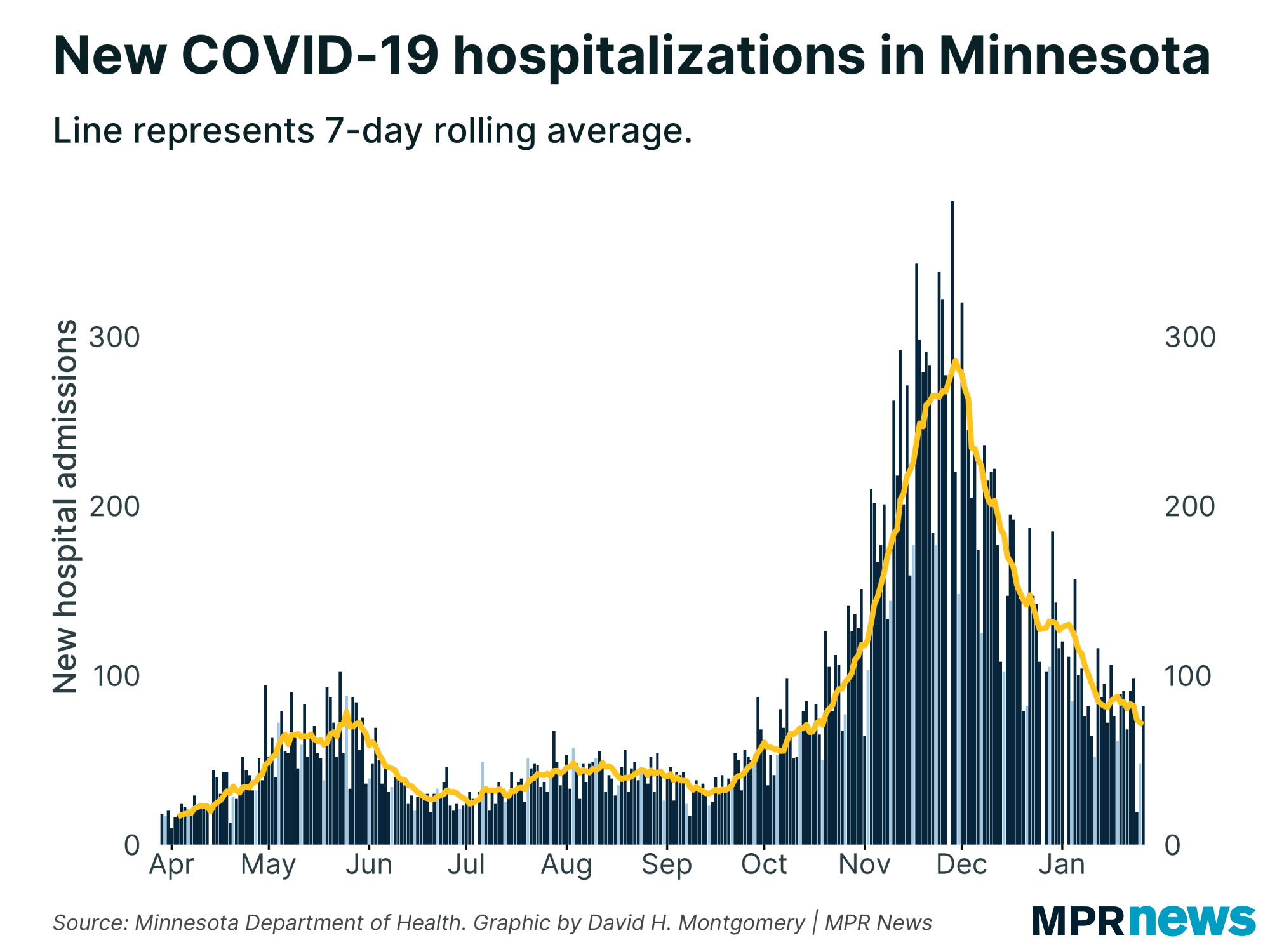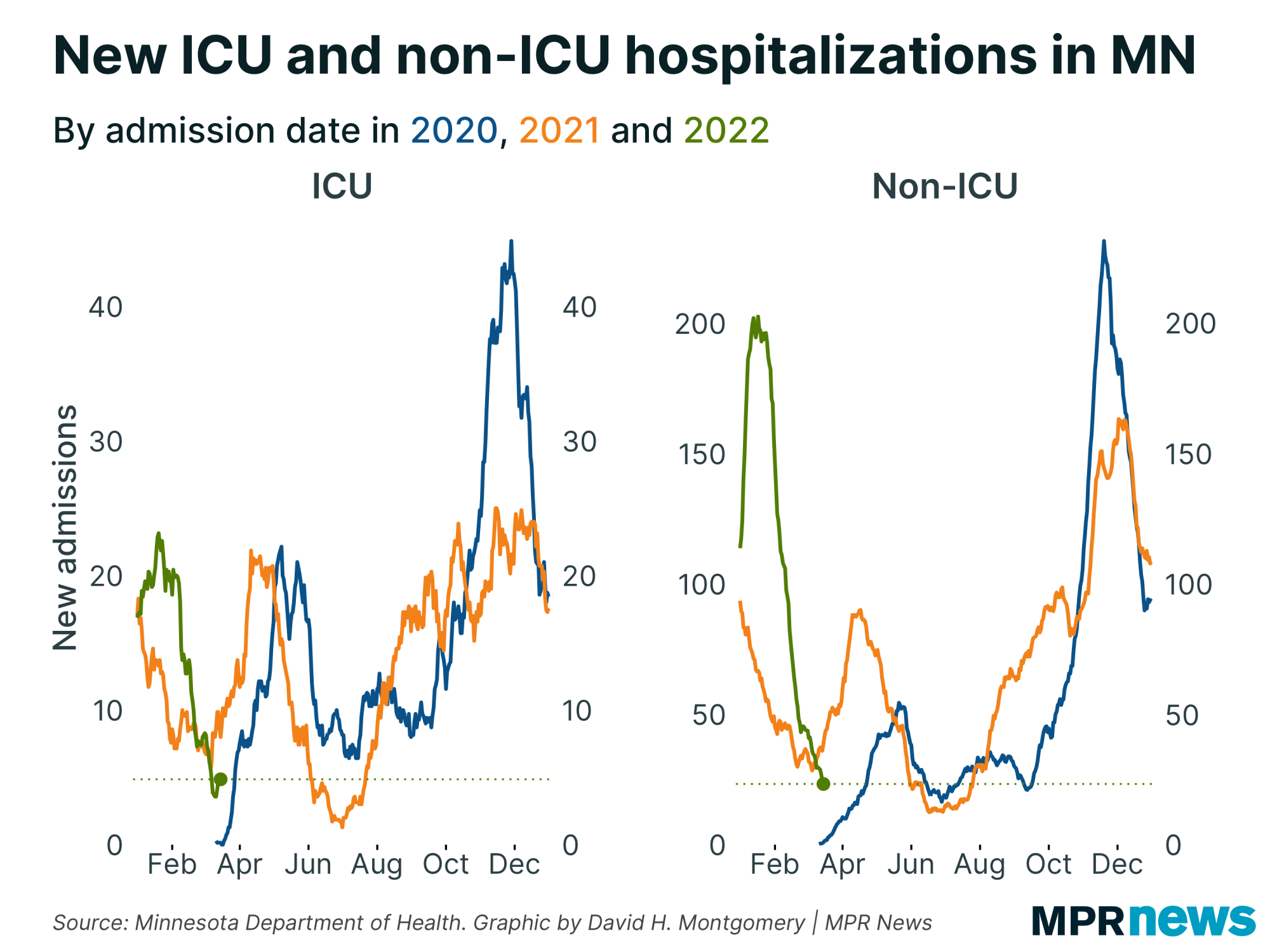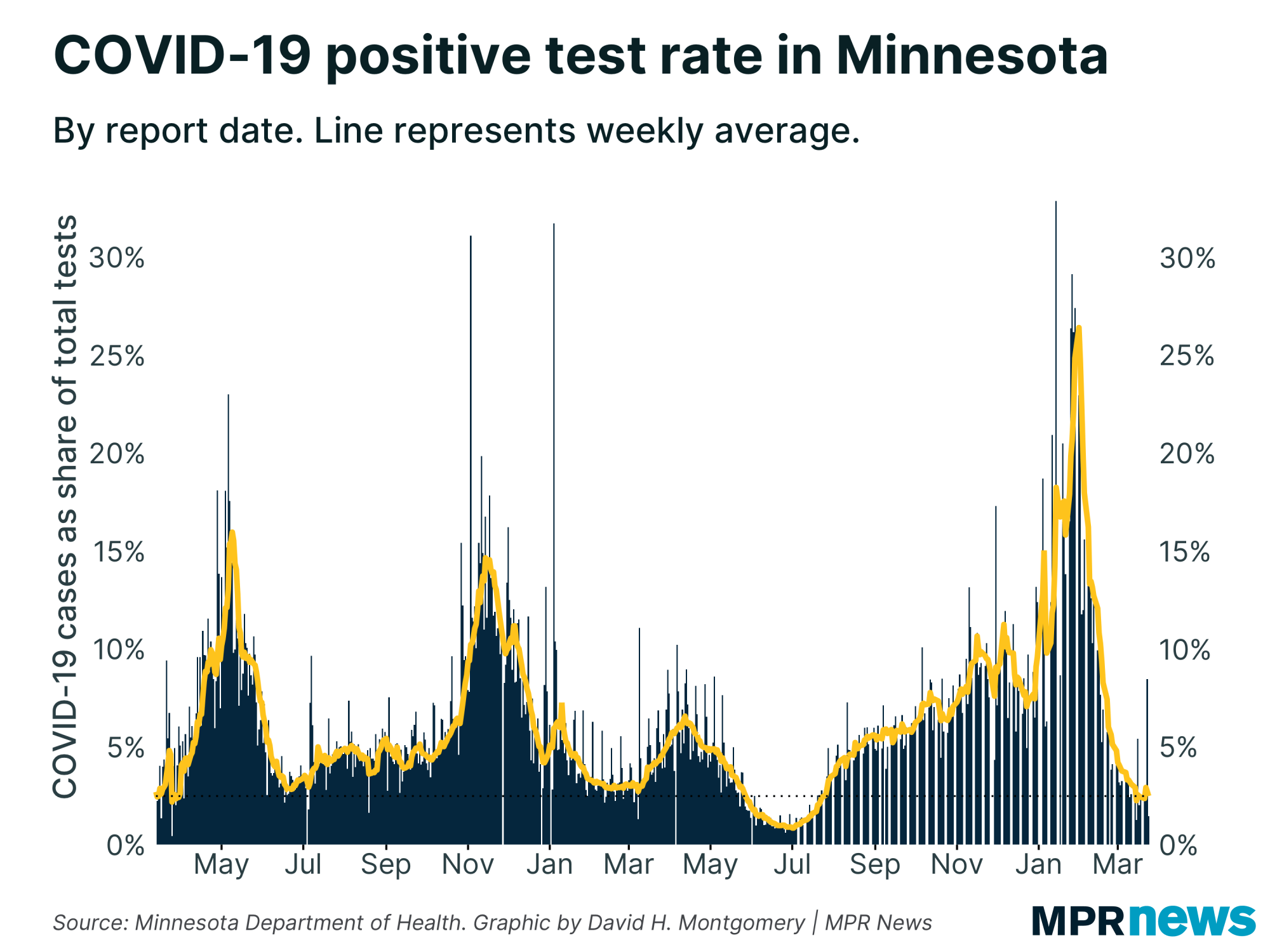Nov. 19 update on COVID-19 in MN: 'Dire' conditions threaten to overwhelm care system

Go Deeper.
Create an account or log in to save stories.
Like this?
Thanks for liking this story! We have added it to a list of your favorite stories.
Updated: 4 p.m.
The COVID-19 surge is threatening to overwhelm Minnesota’s health care system, Gov. Tim Walz and executives with two of the state’s major health networks warned Thursday as they pleaded with Minnesotans to take personal responsibility to stem the disease’s spread.
Current conditions are “very dire,” Dr. Penny Wheeler, CEO of Allina Health, said in an afternoon briefing with reporters. The virus is sickening health care workers — it’s sidelined 800 Allina workers — and the state’s health system is “getting perilously close” to being unable to care for everyone who needs it, she said.
Wheeler begged Minnesotans to wear masks, socially distance and take other measures to reduce COVID-19’s rapid spread. “We have to take a hit for the time being to care for one another.”
She and Dr. Cindy Firkins Smith, president of Carris Health CentraCare in Willmar, Minn., said the rising numbers of health care workers unable to work due in some way to COVID-19 had put an unprecedented strain on their systems and that they needed people to follow state guidelines and stay home for Thanksgiving to avoid spreading the virus.
Turn Up Your Support
MPR News helps you turn down the noise and build shared understanding. Turn up your support for this public resource and keep trusted journalism accessible to all.
“The people working in the hospital not only don’t get to celebrate with the people they love, they’re going to be watching people die that day,” said Smith. “And they don't want to watch you die at Christmas. So please don’t (gather). Just this year, please don’t.”
Their pleas came hours after the state Health Department confirmed 72 more deaths, a single-day high in the pandemic, five more than Wednesday’s record.
The current death counts were “unimaginable” only a few weeks ago but may be the norm in the coming weeks, Walz told reporters.
‘Dangerous point’
The latest figures come a day after the governor rolled out new curbs intended to ease the spike in COVID-19 caseloads, hospitalizations and deaths that are threatening now to overwhelm the state’s health care system.
“We’re at a dangerous point in this pandemic,” Walz told Minnesotans Wednesday night. “How we act, and how this virus moves, will have huge implications on the number of people who will be hospitalized and, ultimately, those who will lose their lives.”
Hospitalizations continue to climb, with the seven-day new admissions trend at a near-record. More than 1,700 people are in Minnesota hospitals because of COVID-19 with about 350 needing intensive care. The numbers have leaped since Nov. 1.

Smith, the west-central Minnesota hospital executive, said more than 10 percent of her 12,000 rural Minnesota workforce was out recently because of COVID-19, either having to quarantine because of illness or exposure, or because they have to take care of family members.
“We don’t have anybody to replace them,” she said. “There’s no calling New York. There’s no calling Texas. There’s no calling the Twin Cities. There’s no calling anywhere to get help.”
Care workers, she added, are increasingly frustrated by the unwillingness of Minnesotans to take precautions.
“It’s heartbreaking for health care workers to finish an exhausting workday only to stop at the grocery store and see people not wearing a mask,” she said.

Her Willmar hospital was unable to accept any new patients during the first 11 days of November because of the surge of COVID-19 patients, she added. Staffers had to find other facilities who could take people who needed care.
“This is a situation that hospitals across Minnesota are facing every day and working desperately to avoid.
Overall, the numbers continue to paint a disturbing picture of a rapidly worsening outbreak in Minnesota not limited to just one region or demographic group, as was the case earlier in the pandemic.
Of the 249,906 confirmed or probable cases identified to date, about 79 percent have recovered to the point they no longer need to be isolated.

The deaths reported Thursday raised Minnesota’s toll to 3,082. Among those who’ve died, about 69 percent had been living in long-term care or assisted living facilities; most had underlying health problems.
Caseloads climbing across age groups
New cases have been spiking over the past three weeks in all age groups.
People in their 20s still make up the age bracket with the state’s largest number of confirmed cases — more than 50,000 since the pandemic began, including nearly 28,000 among people ages 20 to 24.

The number of high school-age children confirmed with the disease has also grown, with nearly 20,000 total cases among children ages 15 to 19 since the pandemic began.
The numbers help explain why experts remain particularly concerned about teens and young adults as spreaders of the virus.
Although less likely to feel the worst effects of the disease and end up hospitalized, experts worry youth and young adults will spread it to grandparents and other vulnerable populations.

It’s especially concerning because people can have the coronavirus and spread COVID-19 when they don’t have symptoms.
Walz said recently the state has data showing infection rates rising around bar and restaurant activity after 9 p.m. among young adults, noting that people who have the virus but don’t have symptoms are unwittingly spreading it.
Virus surges in swaths of rural Minnesota
The state Health Department’s latest data shows the virus cutting across all of Minnesota.
Regionally, central and northern Minnesota have driven much of the recent increase in new cases while Hennepin and Ramsey counties show some of the slowest case growth in the state.

The fastest growing outbreaks remain largely along the state’s western border with the Dakotas, where the virus is spreading unchecked. But new cases are rising everywhere in Minnesota.
Collectively, rural areas continue to report the most new COVID-19 cases per capita.
Northern Minnesota, once the region least affected by the disease, has also seen its caseload grow dramatically in recent weeks.

Latino cases climb
In Minnesota and across the country, COVID-19 has hit communities of color disproportionately hard in both cases and deaths. That’s been especially true for Minnesotans of Hispanic descent for much of the pandemic.

Distrust of the government, together with deeply rooted health and economic disparities, have hampered efforts to boost testing among communities of color, officials say, especially among unauthorized immigrants who fear their personal information may be used to deport them.
Similar trends hold true for Minnesota’s Indigenous residents. Counts among Indigenous people jumped in October relative to population.
Cases among all races and ethnicities continue to rise, although currently the growth is slowest among Black Minnesotans, who reported the most new COVID-19 cases per capita for much of the spring and summer.
‘The ground is really shifting’
State officials on Monday pleaded with Minnesotans not to gather for Thanksgiving outside their immediate household. They also asked college students to consider not going home for the holiday. (The federal Centers for Disease Control and Prevention on Thursday also called on people not to travel over Thanksgiving.)
That advice was a change from the state Health Department’s prior recommendations. The agency last week said it’d be OK for people to have gatherings up to 10 from three households.

Now, though, the disease’s rampant, accelerating spread is forcing the hand of public health officials. By Thanksgiving, Minnesota could be seeing more than 10,000 new cases reported daily, Health Commissioner Malcolm told reporters.
“The ground is really shifting under our feet and we need to adapt quickly,” she said.
Malcolm reaffirmed that on Wednesday night following Walz’s address on the new restrictions. Left unchecked one model suggests Minnesota could hit 20,000 new cases per day by the start of the new year, the commissioner said. That’s nearly three times the current seven-day average.
“Two weeks ago, I thought a 5,000-case day was horrific,” Malcolm said. “Now, that looks like a good day.”
‘Darkest part of the pandemic’
Malcolm, Walz and other officials have pleaded with Minnesotans over the past month to take personal responsibility to reduce the disease’s spread by wearing masks in social gathering places, socially distancing and staying home if you don’t feel well.
The uncontrolled spread is being driven now by Minnesotans’ informal gatherings and get-togethers with family and friends where it’s transmitted unknowingly by people who have the virus but do not have symptoms, officials say.
“Our behavior is driving this … literally thousands and thousands of small decisions happening around Minnesota that are the issue here,” Malcolm said recently.

There’s increasing concern about the ability of hospitals to handle more. Staffing is becoming a challenge as more health care workers get sick.
COVID-19 is taking a toll on hospital staffing, making care more difficult to provide, even as demand grows. The trends indicate the situation will get much worse in the near future Malcolm told MPR News early Monday.
“We know that hospitalizations lag by about two weeks from, or possibly more than two weeks behind the cases,” she added. “So the hospitalizations we’re seeing today are based on cases that were one-third of what we’re seeing today.”
Developments around the state
Landmarks in purple to honor Minnesota’s COVID dead
Cities and towns across Minnesota are expected to light up local landmarks in purple Thursday night to honor victims of COVID-19 and the health care workers battling the pandemic, Gov. Tim Walz’s office said.
The governor invited city and town leaders to post pictures on Twitter of their landmarks lit in purple, using the hashtag #MNtogether.”
— MPR News Staff
COVID curbs courts’ work across Minnesota
New Minnesota court restrictions will limit criminal trials and courthouse service access as the judicial branch responds to an acceleration of the coronavirus pandemic.
The Judicial Council voted unanimously Thursday put the freeze on in-person jury trials that will take effect on Nov. 30. Chief Justice Lorie Gildea plans to formalize the pause in an order coming Friday.
Todd County Judge Jay Carlson, vice chair of the council, made the motion to halt new trials.“Other than new trials that are currently in progress we’re not going to commence any new trials until February unless the chief judge again in consultation with the chief justice has granted a specific exception for a criminal jury trial to commence,” he said.
Exceptions will be made for in-custody defendants or other defendants that made a speedy trial demand prior to the order. Some grand jury proceedings will also be suspended.
Judges on the council said that staff and jurors have become more reluctant to come into court buildings as COVID-19 spreads rapidly.
During the pandemic, the court system has pushed many of its proceedings into virtual settings, including motions hearings in some criminal and civil cases.
The courts also are expected to limit walkup counter service in government buildings, urging people to either make appointments or use virtual methods where possible. But each county will retain at least one public service counter with daily hours.
“I think we should all just send good vibes out into the universe for a vaccine very, very soon,” said Judge Krista Martin of Pine County.
— Brian Bakst | MPR News
Record COVID cases stressing hospitals in Fargo
At Sanford Health, chief medical officer Doug Griffin says the Fargo, N.D., hospital is averaging 500 patients a day with more than 100 of those being treated for COVID-19. That's four times higher than the COVID-19 caseload last spring.
"We simply have to reduce the need for hospital beds. It will be quite awhile before the vaccine makes an impact because our hospital and the hospitals across the nation really are full. There is nowhere else to go," Griffin said.
Griffin said Sanford has hired 120 travel nurses to address a staffing shortage caused by COVID-19 cases among workers. The company's asking retired nurses to return to work.
Sanford is also expanding bed capacity and triaging all nonemergency surgeries.
— Dan Gunderson | MPR News
Red Lake chair: National Guard to aid reservation nursing home
The tribal chair of Red Lake Nation says the state is sending help to deal with rising COVID-19 cases on the northern Minnesota reservation.
Darrell Seki said that as of Monday there were 46 people with active COVID-19 cases on the reservation. He said that includes 19 residents and 13 staff at the Jourdain Perpich Extended Care Facility in Red Lake.
"Due the increased number of COVID cases in our area, Gov. Walz will activate National Guard nurses to assist at the nursing home as our registered nurses and CNAs have tested positive," Seki said in an online post.
Seki said it's been impossible to hire additional staff because so many other nursing homes are also dealing with shortages.
"See what happened is they opened it up for visiting for a week. The residents start getting COVID,” he said. “Then all of a sudden our nurses are getting, our director of nursing is one, even our director of the nursing home got COVID."
The governor's office did not respond to a request for information about potential National Guard deployment to tribal nations in Minnesota.
— Dan Gunderson | MPR News
Olmsted County suspends contact tracing as COVID cases surge
A second Minnesota county has said COVID-19 cases are growing so rapidly that they can’t keep up with standard case investigations.
Olmsted County, including Rochester and its surroundings, has jumped from an average of 67 cases a day at the beginning of November to more than 120 cases a day.
Health officials say they can no longer trace the contacts of everyone with a confirmed case. They’re asking people who test positive to reach out to people they’ve been in close contact with on their own.
Positive cases also need to alert their employers, school or child care provider.
Itasca County in northern Minnesota took similar steps last week, and the state of North Dakota did as well, saying the COVID-19 outbreak has outstripped the standard public health measures to fight it.
— Tim Nelson | MPR News
Staff illness reaching crisis levels at nursing homes
Just a month after the state eased restrictions on family visiting long-term care residents, industry officials say COVID-19 is making visits more dangerous than ever.
Patti Cullen, president of Care Providers of Minnesota, said that staff illness is reaching crisis levels in nursing homes, and elderly patients remain as susceptible as ever to the coronavirus.
She said visits shouldn’t even be on the table because of the prevalence of COVID-19 in the community outside care centers.
"Other than virtual visits or outdoor visits, there is no safe way," she said.
Cullen said that it isn’t just a matter of keeping vulnerable residents safe, but keeping care facilities available to take recovering patients from hospitals. She said they need to take patients to free up hospital beds for people who need a higher level of care.
— Tim Nelson | MPR News
Top headlines
CentraCare to make Sauk Centre a COVID-19 hospital: Starting Monday, COVID-19 patients from around central Minnesota who do not require ventilators or high-volume oxygen will be cared for at the western Stearns County hospital. CentraCare says the changes are in response to the surge of coronavirus cases across central Minnesota, and are aimed at reducing the pressures on its two largest hospitals, in St. Cloud and Willmar.
Mayo Clinic says 905 staff diagnosed with COVID in past 2 weeks: More than 900 staff members in the Mayo Clinic Health System in the Midwest have been diagnosed with COVID-19 over the last two weeks as the virus continues to surge across the region, officials said.
Health care workers feel squeezed by surge of COVID-19 cases: Hospitalizations for COVID-19 patients in Minnesota are surging. Even when beds are available, staffing them is a challenge as more health care workers get sick. On Thursday’s MPR News with Kerri Miller, two physicians discussed the toll of the increase caseload on health care workers.
As COVID surges, Minnesota dials it back. Here’s what you need to know about the new rules: As Minnesota’s COVID-19 cases continue to surge, Gov. Tim Walz has laid out new restrictions for the next four weeks, including a prohibition on social gatherings with people outside the same household. Here’s what else you need to know about the new rules.
Restaurants, gyms on the verge of COVID-19 closure worry about employees: “It sounds really bad, but it’s like mom and dad getting divorced and you’re that kid just sitting there saying what’s going to happen to us. That’s what we feel like,” said one Minneapolis chef.
COVID-19 in Minnesota
Data in these graphs are based on the Minnesota Department of Health's cumulative totals released at 11 a.m. daily. You can find more detailed statistics on COVID-19 at the Health Department website.


